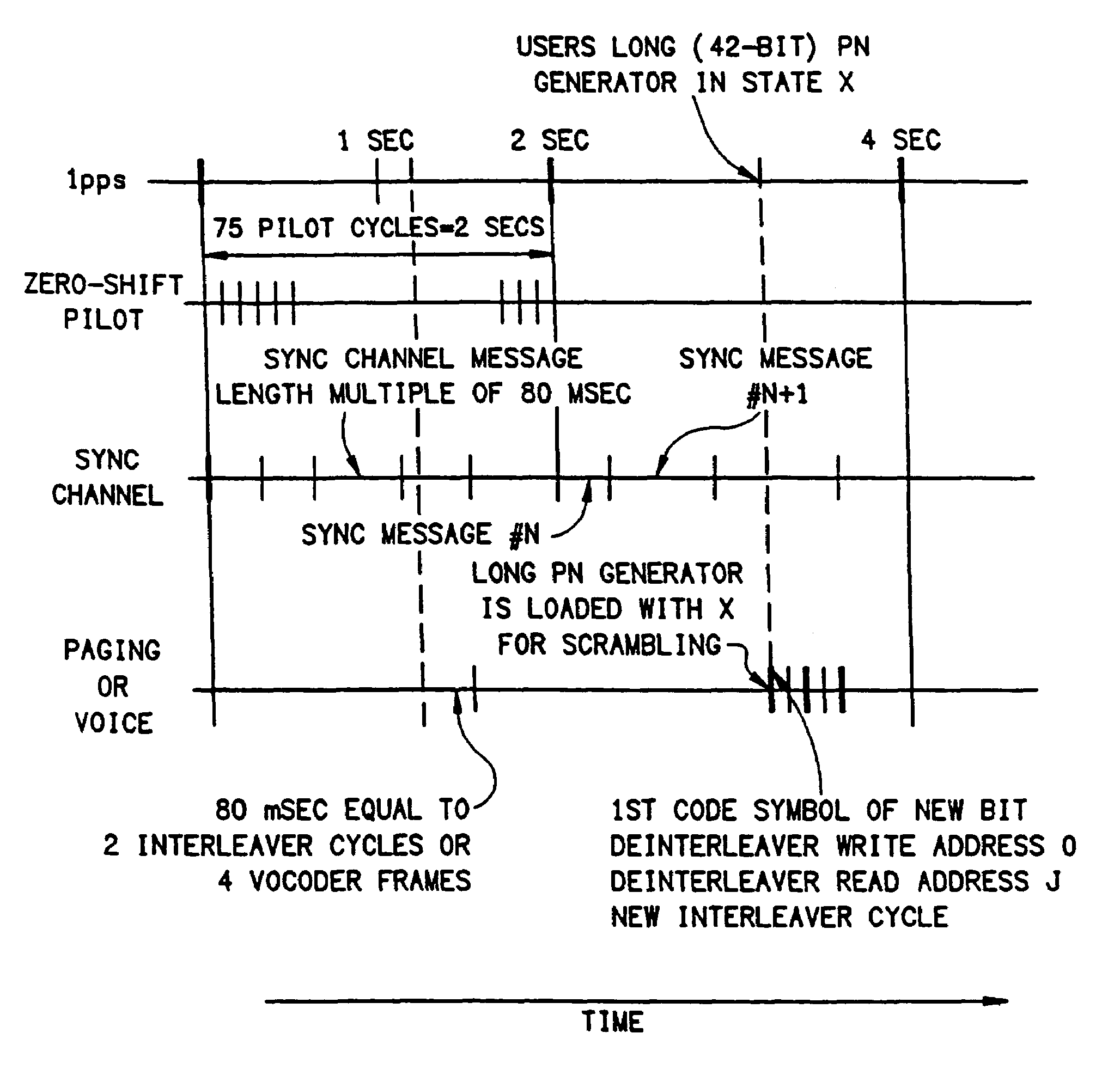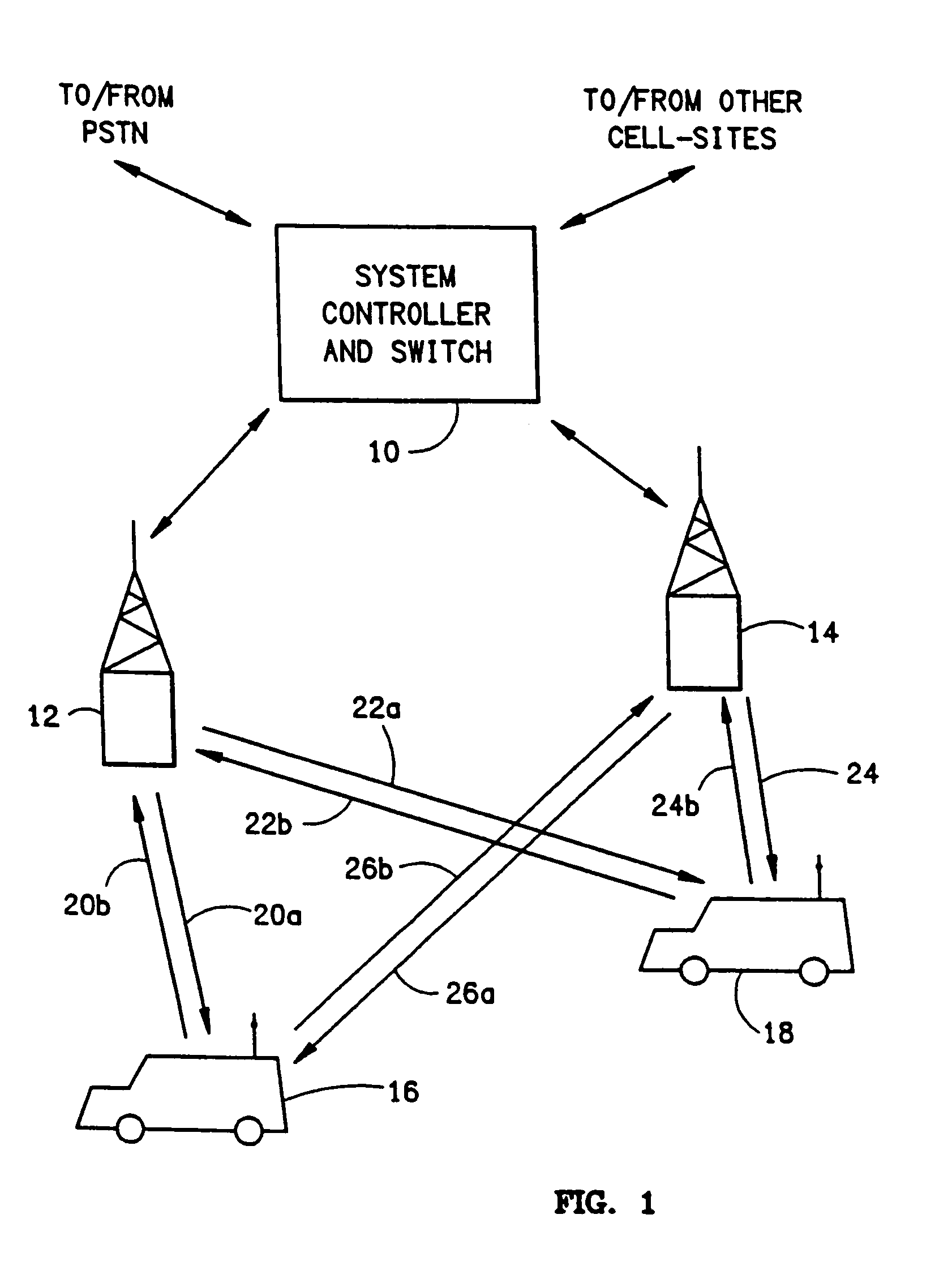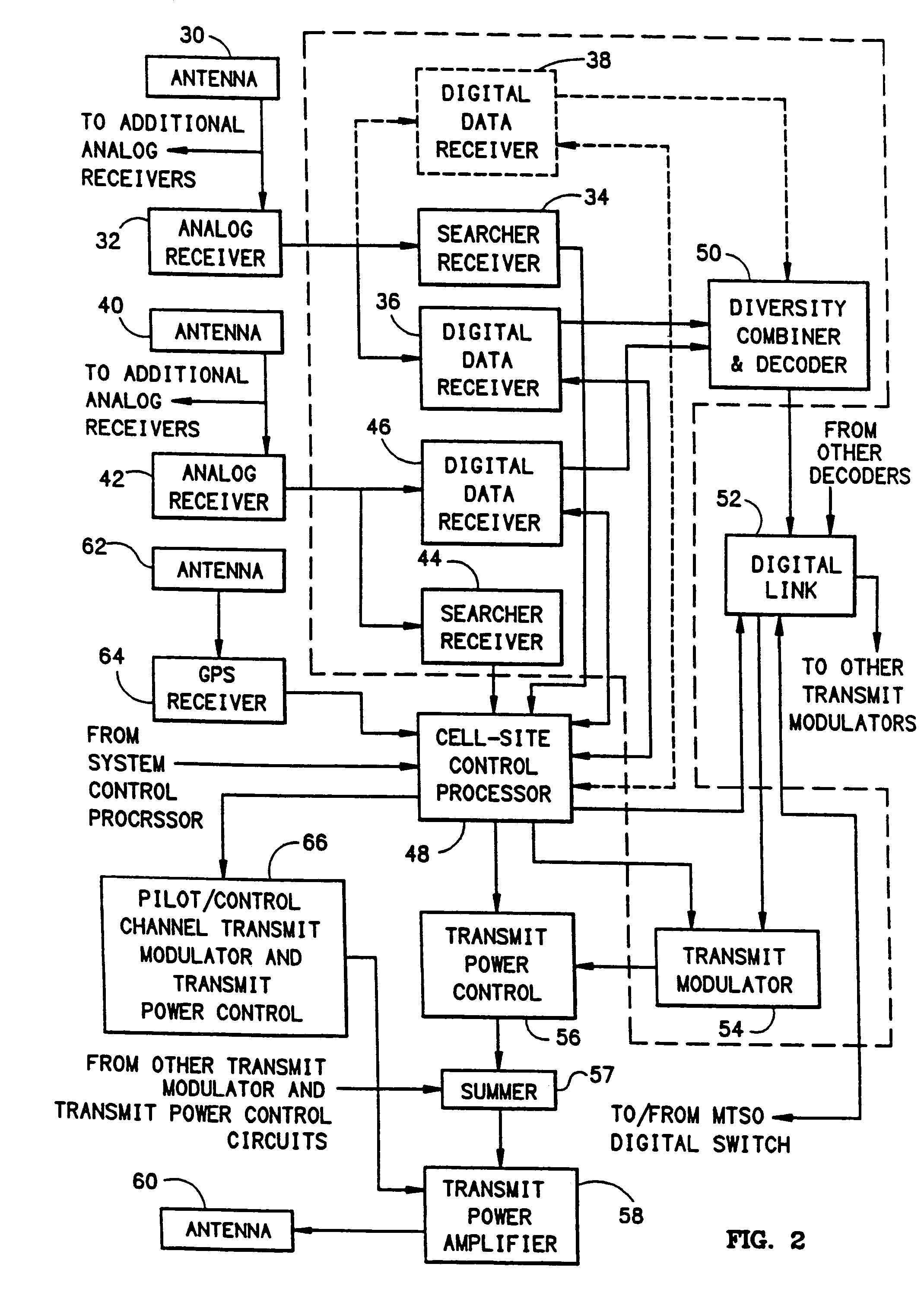System and method for generating signal waveforms in a CDMA cellular telephone system
a cellular telephone system and signal waveform technology, applied in power management, orthogonal multiplex, multiplex communication, etc., can solve the problems of affecting the reliability of the system, so as to improve the reliability and capacity of the system, increase the number of system users, and increase the frequency reuse
- Summary
- Abstract
- Description
- Claims
- Application Information
AI Technical Summary
Benefits of technology
Problems solved by technology
Method used
Image
Examples
Embodiment Construction
[0041]In a CDMA cellular telephone system, each cell-site has a plurality of modulator-demodulator units or spread spectrum modems. Each modem consists of a digital spread spectrum transmit modulator, at least one digital spread spectrum data receiver and a searcher receiver. Each modem at the cell-site is assigned to a mobile unit as needed to facilitate communications with the assigned mobile unit.
[0042]A soft handoff scheme is employed for a CDMA cellular telephone system in which a new cell-site modem is assigned to a mobile unit while the old cell-site modem continues to service the call. When the mobile unit is located in the transition region between the two cell-sites, the call can be switched back and forth between cell-sites as signal strength dictates. Since the mobile unit is always communicating through at least one cell-site modem, fewer disrupting effects to the mobile unit or in service will occur. The mobile unit thus utilizes multiple receivers for assisting in the...
PUM
 Login to View More
Login to View More Abstract
Description
Claims
Application Information
 Login to View More
Login to View More - R&D
- Intellectual Property
- Life Sciences
- Materials
- Tech Scout
- Unparalleled Data Quality
- Higher Quality Content
- 60% Fewer Hallucinations
Browse by: Latest US Patents, China's latest patents, Technical Efficacy Thesaurus, Application Domain, Technology Topic, Popular Technical Reports.
© 2025 PatSnap. All rights reserved.Legal|Privacy policy|Modern Slavery Act Transparency Statement|Sitemap|About US| Contact US: help@patsnap.com



